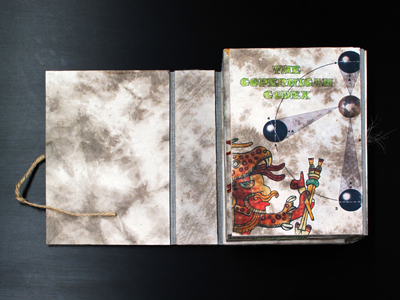“Every book is a metaphor, an object of associations and history, cultural meanings and productions values, spiritual possibilities and poetic spaces, and all of these are part of the field which the artist’s books derives its identity” (Johanna Drucker, The Century of Artists’ Books, 1995, quoted in Journal of Artist’s Books (Spring 2001), 4.
Artists’ books are, simply put, books made by artists. This definition does not, however, do justice to the enormous creativity and diversity of materials and objects that are used to create these works. Metal, paper, fabric, glass, and even edible elements are among the many materials that book artists experiment with. Artists have been playing with book like forms in their art for hundreds of years, but it become a special category of creative work in the last few decades. In comparison to some artists’ books, which are more sculptural or performative, such as Incatations by Ambar Post. The highlighted books in this project are fairly traditional.

Incantations by Ambar Past (1949-)
Image courtesy of Special Collections of the University of Miami Richter Library

Image courtesy of Special Collections at the University of Miami Richter Library
